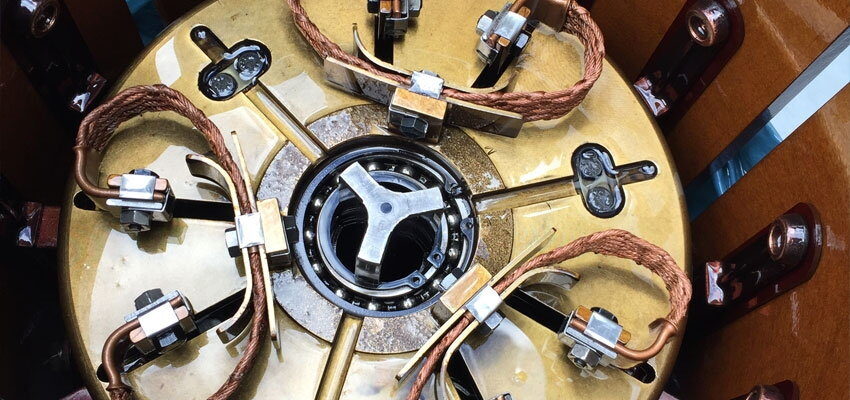
Dynamic analysis and testing of on-load tap changer
Abstract The dynamic resistance measurement was developed as a supplementary measurement in order to analyse the switching process of the on-load tap changer. The article...
by Cornelius PLATH, Markus PÜTTER

Abstract
The dynamic resistance measurement was developed as a supplementary measurement in order to analyse the switching process of the on-load tap changer. The article considers the importance of on-load tap changers and their main testing methods with the focus on dynamic resistance measurement.
Keywords: power transformer, on-load tap changer, OLTC, dynamic resistance measurement, DRM
Introduction
Power transformers represent the most expensive link between generation and utilization of electric power. One very important component of a power transformer is the on-load tap changer (OLTC). As its name suggests, an OLTC permits tap changing, and hence regulating voltage without interrupting the load current. This can be accomplished in various ways, resulting in considerably diversified tap changer designs. The two most common ones are the so-called inductive and resistive type tap changers.
Studies, as shown in Figure 1, show that about 30% of reported failures of substation power transformers are related to the aging effects on OLTCs. Due to this high failure rate, it is very important to monitor the condition of the power transformer’s OLTC closely. Unlike other more static components in a transformer, the OLTC consists of numerous moving parts. Manufacturers typically recommend a maintenance cycle that mostly depends on the total number of switching operations.

Figure 1. Failure location of substation transformers based on 536 failures
1. Types of OLTCs
To analyse and assess the dynamic resistance measurement (DRM) in a proper manner, it is important to know the type and the construction of the OLTC. There are two common OLTC technologies in the market. The inductive ones, which are typically used in the North America on the low-voltage side, and the resistive OLTCs, which are often used in the rest of the world on the high-voltage side.
This article focuses on resistive type tap changers. In general, there are two different types of resistive tap changers: diverter switch and selector switch type, as shown in Figures 2 and 3.







